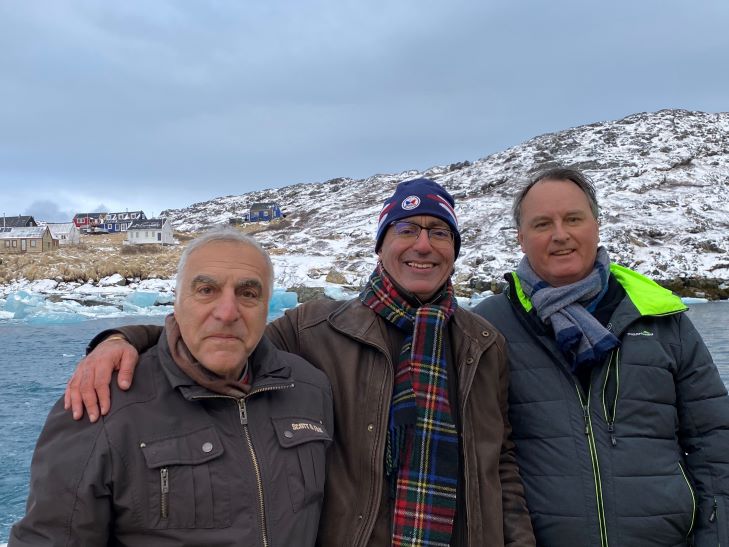Two researchers from UVSQ’s Atmosphere Physics/Space Observation laboratory LATMOS, accompanied by Professor Jan Borm, director of MIARC, visited Greenland in the aim of strengthening and establishing new collaborations with institutional and private organisations.

The purpose of this visit was to promote scientific research on the Arctic, but also to discuss the future setting up of a ground station to receive satellite data from the Laboratoire Atmosphères Observations Spatiales (LATMOS-UVSQ/Sorbonne University/CNRS).
The installation of a ground station in Nuuk (Greenland) to receive satellite data in polar orbit brings major benefits, in particular optimal coverage due to the town's geographical position. This high location in northern latitudes would ensure frequent and regular visibility of the two LATMOS satellites currently in polar orbit at an altitude of 500 km. This would facilitate more constant and reliable communication between the UVSQ-Sat (in orbit since January 2021) and Inspire-Sat 7 (in orbit since April 2023) satellites.
The ability to receive information in near-real time is a valuable asset. This significantly reduces the latency between space data acquisition and processing.
With the launch of UVSQ-Sat NG in 2025, a new state-of-the-art satellite designed by LATMOS, there is an urgent need for an additional ground station to receive satellite data. This would relieve the operational load on the current station (Hermès) located at the Observatoire de Versailles Saint-Quentin-en-Yvelines, which already manages communications for two LATMOS satellites (UVSQ-Sat and Inspire-Sat). The installation of this new infrastructure is essential to ensure the efficient and continuous management of satellite operations and to optimise the processing of the data collected.
Discussions have been held with Tusass, the main telecom operator in Greenland, for the satellite data reception antenna project. As a provider of a wide range of telecom services, including broadband internet, mobile and fixed telephony and other connectivity solutions, Tusass is a key player in ensuring smooth communications in Greenland. This collaboration is strategic, as it provides the communications infrastructure needed to support LATMOS's activities in receiving data from these satellites.
The partnership with Tusass is therefore crucial to the successful deployment of a new antenna to receive data from the UVSQ-Sat and Inspire-Sat 7 satellites from April 2024. Asiaq Greenland Survey is playing a key role in achieving this objective.
As an institute specialising in the study and mapping of Greenland, Asiaq is contributing its expertise and support to this programme.
Mustapha Meftah, who heads UVSQ’s space programme, Alain Sarkissian, who is in charge of the educational programme, and Jan Borm, Director of the Malaurie Institute of Arctic Research Monaco-UVSQ (MIARC), plan to name the new satellite data reception facility 'The Geisler-Malaurie Station'. The data collected by this station will be used solely for scientific research purposes (the Earth's radiation balance, observation of greenhouse gases, changes in sea ice, etc.) and will be shared in total transparency with all the partners involved and largely disseminated among youth in Greenland and elsewhere.
It is imperative that the Greenlandic community and its political representatives are promptly informed of the deployment of this programme, as is the Danish National Defence Academy.
Photo: from left to right, Alain Sarkissian, Mustapha Meftah and Jan Borm, Greenland, November 2023 (© Jan Borm)

